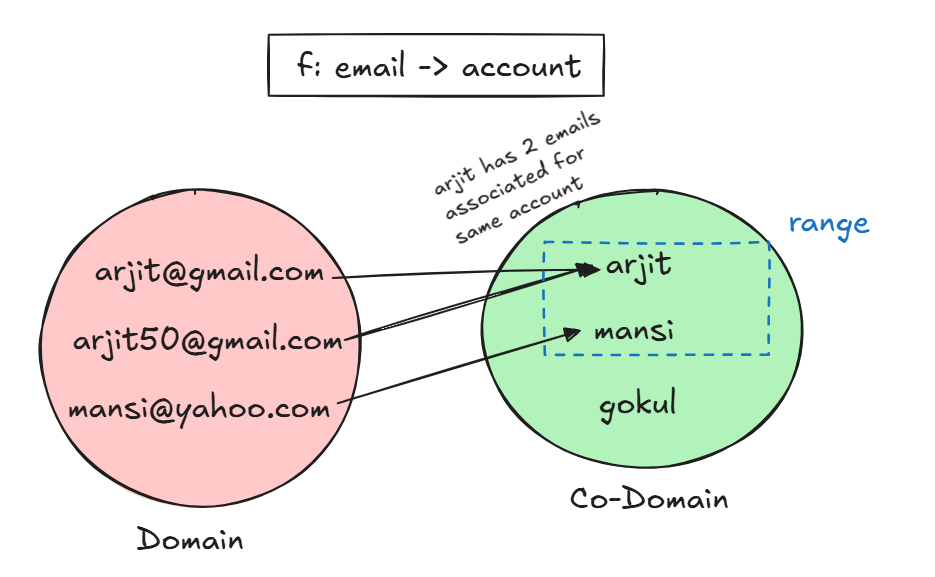Functions
What is a Function ?
In math and code, a function is a rule that assigns exactly one output to each input. In discrete math, it is a relation between sets that associates every element for first set to exactly one element of second set.
A function f from set A to set B:
f: A → B
means every element in A is paired with one and only one element in B. Usage example can be in a website where email is mapped to a user account.

Function Composition
Function composition (f . g)(x) means applying function g first, then applying f to the result: f(g(x))
const trim = str => str.trim();
const toLowerCase = str => str.toLowerCase();
// Composed function
const cleanEmail = str => toLowerCase(trim(str));
// Usage
cleanEmail(" arjit@Gmail.COM ")
Types of Functions
1. Injective (One-to-One)
Each input maps to a unique output. No two users share the same email.
2. Surjective (Onto)
Every output is used at least once. Every department in a company must have atleast one employee.
3. Bijective (One-to-One & Onto)
Perfect pairing where each input has exactly one output and vice versa. Each country has only 1 currency associated to it.
Inverse of a Function
Just reverse the function. If f(x) = y, then f⁻¹(y)=x. As you can imagine, it has loads of application indirectly from encryption to computer graphics.
Example - Let f(x)=5x-7 then f⁻¹(y)=(y+7)/5
Conclusion
Functions aren’t just pieces of code, they’re structured relationships with properties. Understanding those properties helps when building logic that’s traceable, invertible, and robust.